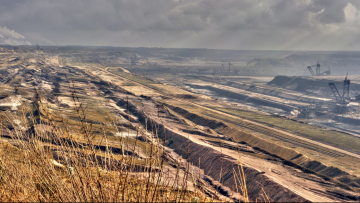Cernavoda nuclear reactor too dangerous to build, says new report
Shawn-Patrick Stensil, Greenpeace Canada energy campaigner, 416 884 7053, shawn.patrick.stensil@greenpeace.org
Jan Haverkamp, Greenpeace EU policy campaigner, +32 477 790 416, jan.haverkamp@greenpeace.org (English)
Crisanta Lungu, Greenpeace energy campaigner, Romania, +40 720 544 000, crisanta.lungu@greenpeace.ro
Shawn-Patrick Stensil, Greenpeace Canada energy campaigner, 416 884 7053, shawn.patrick.stensil@greenpeace.org
Jan Haverkamp, Greenpeace EU policy campaigner, +32 477 790 416, jan.haverkamp@greenpeace.org (English)
Crisanta Lungu, Greenpeace energy campaigner, Romania, +40 720 544 000, crisanta.lungu@greenpeace.ro
Greenpeace is calling on Romania to abandon its plans to build two new Candu-6 reactors at Cernovoda in response to a recently released Greenpeace commissioned report that finds the Canadian reactor design is unsafe and too dangerous to build according to modern safety standards.
“The Cernavoda reactors do not meet modern standards. The Romanian Government and the project companies must abandon their plans to proceed with the construction of Cernavoda 3 and 4," said Crisanta Lungu, an energy campaigner with Greenpeace in Romania.
The report, "The Risks of Operating Candu 6 Nuclear Power Plants" was presented to the press in Romania today during a press conference with videolinks to Canada and the USA. It warns that countries like Romania wanting to construct CANDU-6 reactors would have to forgo thorough safety reviews. These include standards intended to prevent catastrophic radiation releases from terrorist attacks or accidents.
The study, carried out by Dr. Gordon R. Thompson of the Institute for Resource and Security Studies in Massachusetts, USA, highlights a litany of problems with the CANDU-6 design, including:
- The same design flaw that contributed to the Chernobyl explosion and to the world’s first nuclear accident in 1952 at AECL´s Chalk River laboratories. This design flaw does not meet modern safety standards.
- The CANDU-6 would not resist a terrorist attack and would not meet post-9/11 safety standards.
- The occurrence of external events like earthquakes, quite common in this part of Romania, are not taken sufficiently into account in risk calculations for CANDU-6 reactors.
- Its emergency shut-down systems are untested and unproven. Confidence in the ability of these systems to operate in accident situations is low.
- Its use of natural uranium and online fueling makes it attractive to countries hoping to acquire the capacity to divert plutonium from used fuel to build atomic weapons. India used a Canadian reactor to build an atomic bomb; AECL stated late last year it would like to sell additional reactors to India and is using possible construction of CANDU-6 reactors in Cernavoda as marketing argument for its international sales.
Based on Dr. Thompson’s findings, Greenpeace is recommending full risk assessments before the licensing and construction of the reactors is permitted and a formal request for such assessments to the Romanian government, Romanian Nuclear Regulatory Agency, the European Commission, the companies involved in the construction of Cernavoda 3 and 4.
"Because the CANDU-6 shares a fatal design flaw with the Chernobyl reactors, safety regulators in the Germany and the USA would never allow it to be built. If Romania continues the construction of Cernavoda 3 and 4, it clearly considers its population to be second class citizens that can be served with a second class nuclear power station," said Jan Haverkamp, nuclear energy expert for Greenpeace Europe.
Greenpeace notes that Canadian province of Ontario, the birthplace of the CANDU-6 design, abandoned its plan to build a new CANDU-6 in 2006 because of the design changes required for the CANDU-6 to meet modern standards. "In a post September 11th, post Chernobyl world, Canada should not export a reactor deemed too dangerous to build here at home," Shawn-Patrick Stensil, Greenpeace energy campaigner in Canada.
The report was written by Gordon Thompson, a nuclear expert and professor at Clark University in Worcester, Massachusetts. He was educated in Australia and the UK, in engineering and science, obtaining his doctorate from Oxford University in 1973.
Last month, Greenpeace Europe filed a complaint on with the European Commission over alleged illegal state aid for the construction of additional CANDU-6 reactors at Cernavoda.
NOTES TO THE EDITOR:
The project companies involved in the construction plans of Cernavoda 3 and 4 are the 100% state owned Romanian utility SN Nuclearelectrica A.S., GdF Suez / Electrabel from France, RWE from Germany, CEZ from the Czech Republic, ENEL from Italy, Iberdrola from Spain and Arcelor-Mital from India.


